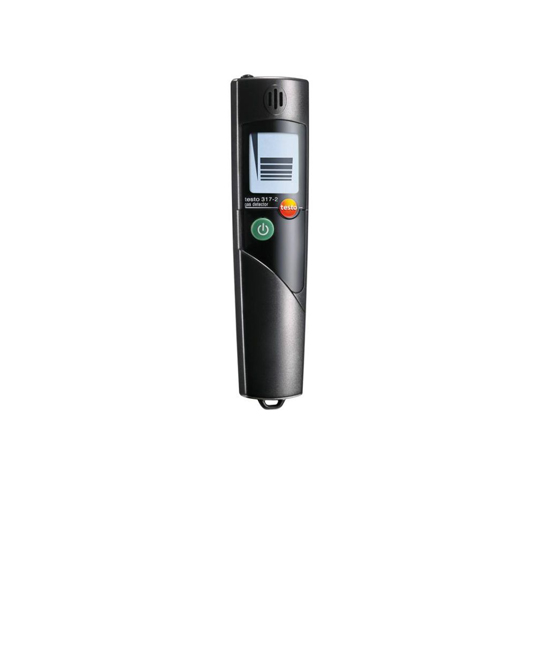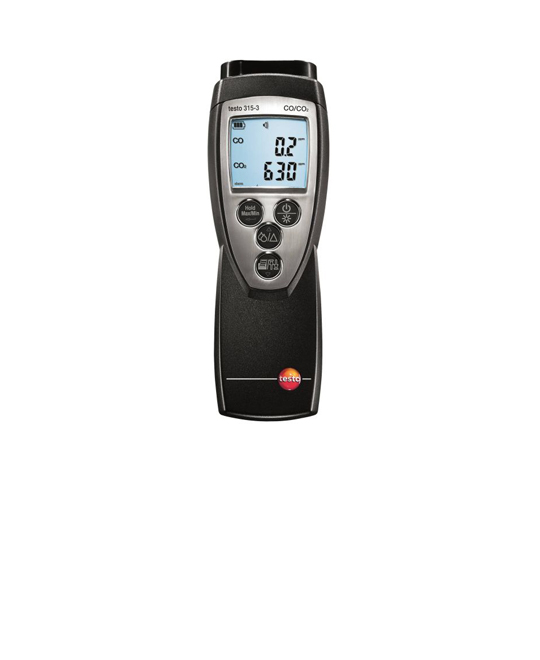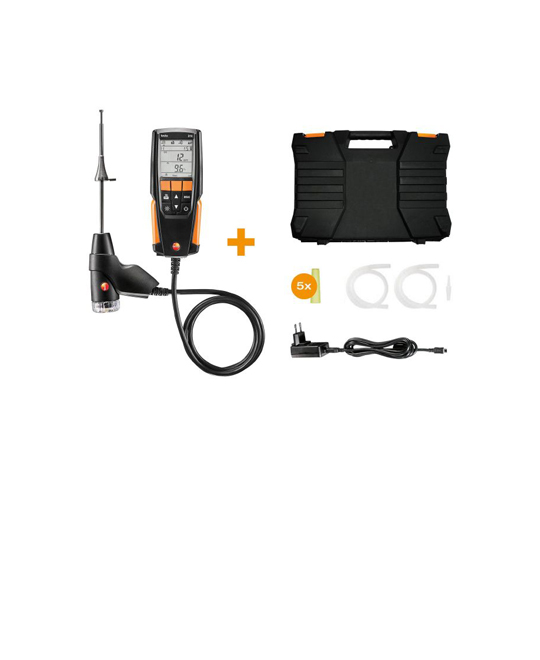Gas leak detector for new users – testo 317-2 (DISCONTINUED)
Leaky gas pipes not only lead to higher gas consumption, but can also trigger explosions and fires in the worst case scenario. Because leaks are often difficult to detect with the naked eye (for example with smallest hairline cracks), gas measuring technology is useful when it comes to testing gas pipes.
Gas pipe connections can be safely and efficiently tested with the testo 317-2 gas leak detector. The handy gas detector for new users detects two types of gas: methane and propane. The gas concentration is shown via a bar display. In addition, the gas leak detector indicates increasing gas concentrations via an acoustic alarm.
Methane (CH₄) |
|
|---|---|
| Range | 100 to 20000 ppm |
| Lower response threshold | 100 ppm |
| 1st alarm limit | 10000 ppm (20% LEL) |
Propane (C₃H₈) |
|
|---|---|
| Range | 50 to 10000 ppm |
| Lower response threshold | 50 ppm |
| 1st alarm limit | 5000 ppm (20% LEL) |
General technical data |
|
|---|---|
| Weight | <300 g |
| Reaction time | t₉₀ <5 s |
| Operating temperature | -5 to +45 °C |
| Heat up time | 60 s |
| Battery type | 2 batteries type micro AAA 1.5 V (LR03) |
| Battery life | 4 h (LR03) |
| Display type | 8 segment trend display |
| Storage temperature | -20 to +50 °C |
Gas leak detection in gas pipes in the heated environment
Gas leak detection is the elementary testing of gas pipe parts for existing leaks. Leaks are detected by testing a connection point; e.g. at fittings, flanges, screw fittings and gas control valves. It is also important to check ducts entering buildings and gas pipes concealed in cavities at the air outlets. The application can be operated in different ways.






